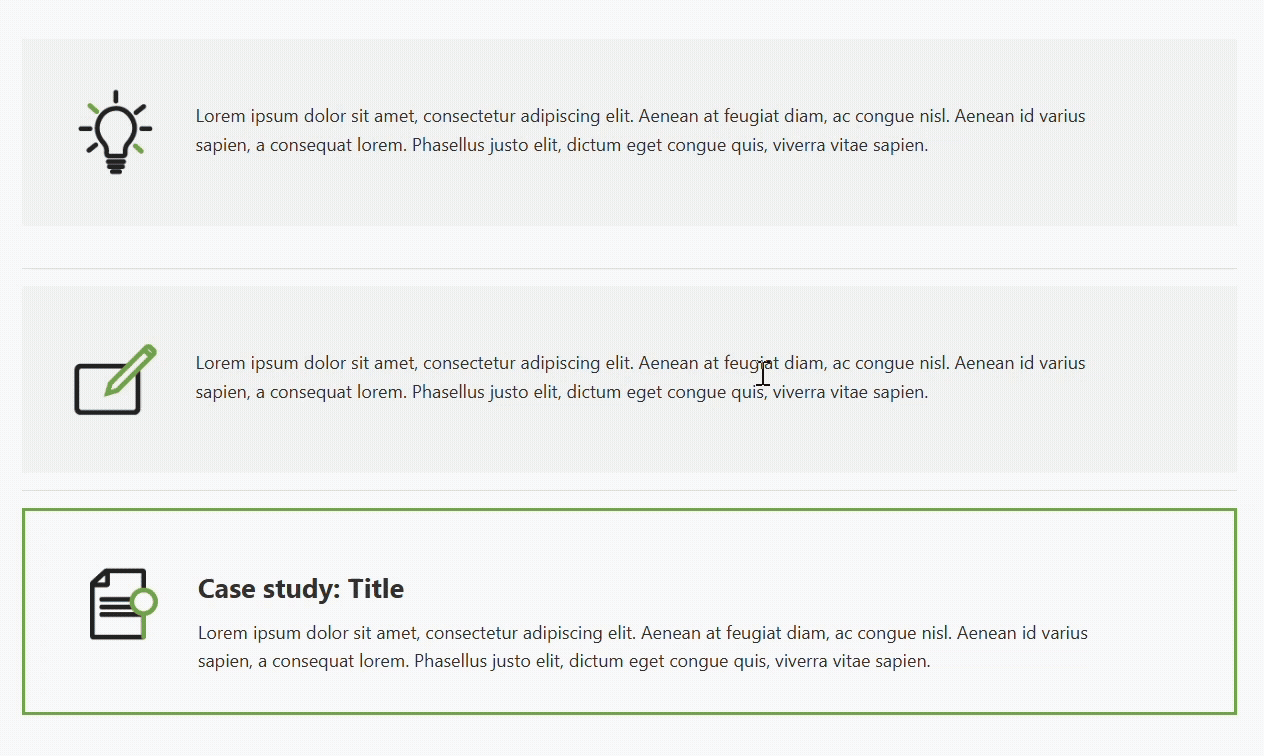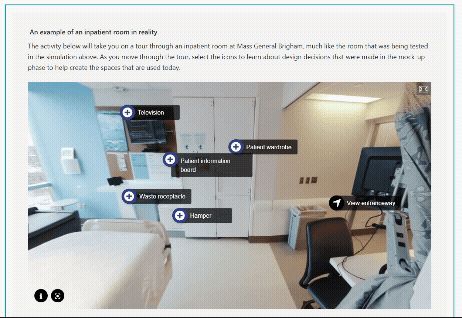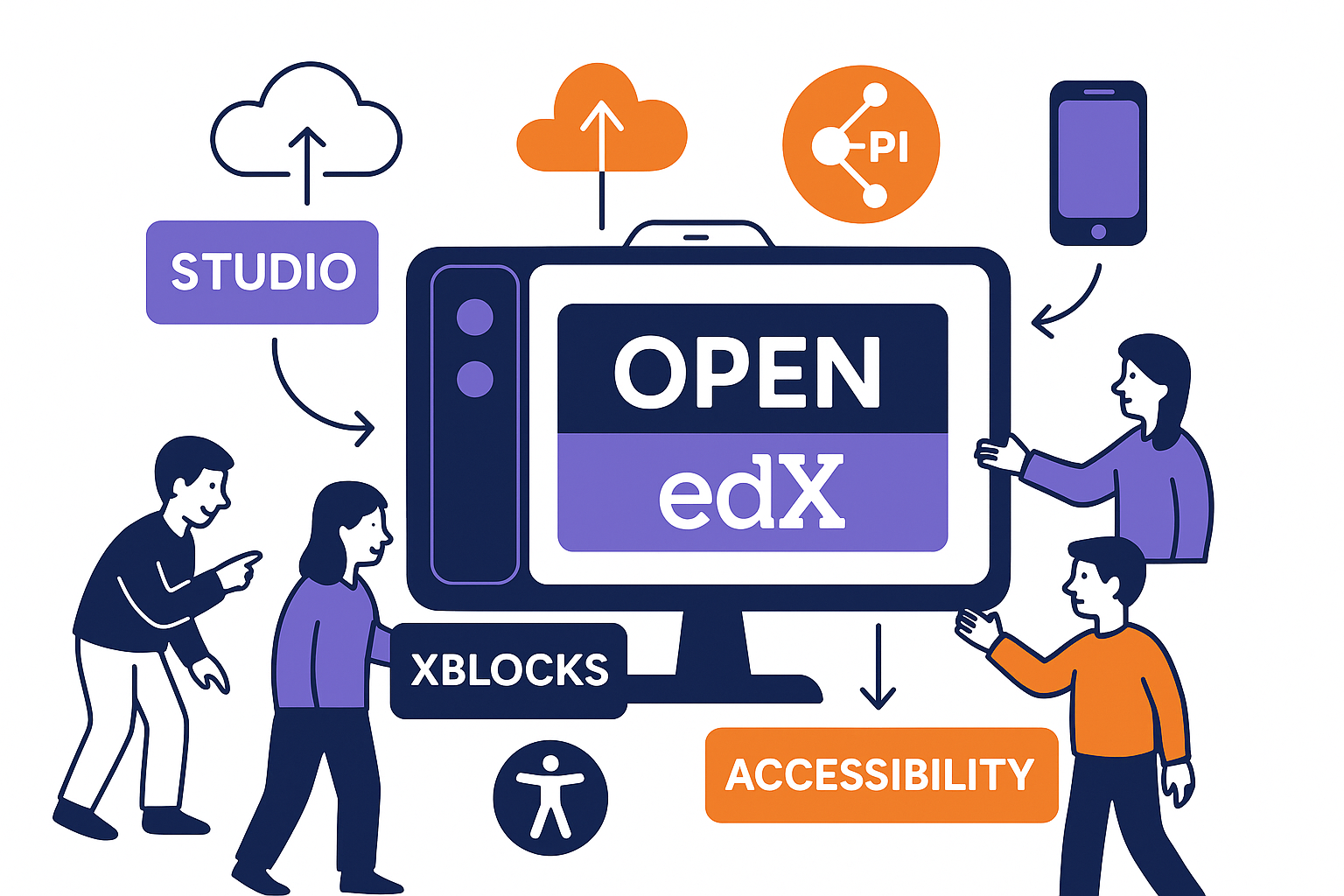Open edX is the world’s leading open-source learning management system (LMS). In 2023, it was used by over 55 million learners worldwide. As institutions embrace digital learning, the need for a scalable and customizable LMS has never been greater, and Open edX provides a powerful and modular framework that enables organizations to scale their learning experiences efficiently while maintaining a high degree of customization.
At OES, we often recommend Open edX to deliver world-class digital learning experiences for universities, businesses, and nonprofits.
I remember the first time I opened Open edX Studio, I was slightly intimidated! There seemed to be so much going on, and I thought it would take me forever to learn. But after using it for about an hour, it fast became my favorite platform.
The user-friendly design, extensive documentation, and active community forums meant that almost every question I had was answered quickly. Since then, its ease of use and flexibility means Open edX remains my go-to platform.
Let’s dive a little deeper into why I love using this platform to optimize learner engagement and performance, and how organizations can benefit from its many features.
The Modular Framework: Building for Growth
One of Open edX’s greatest strengths is its modular architecture, which allows institutions to start small and expand as needed. Unlike traditional LMS platforms that require an overhaul when scaling, Open edX enables incremental growth, making it ideal for both universities launching new programs and corporations developing large-scale employee training initiatives.
The scalability and flexibility are thanks to Open edX’s fundamental structure. At its core, the platform is composed of several key layers:
- LMS: The learner-facing interface where students access courses
- Studio: A course authoring tool that enables instructors to build and manage content
- XBlocks: A powerful plugin system that allows for interactive learning experiences
- Course Discovery and E-Commerce: Tools for course monetization and catalog management
- Mobile Applications: Native support for mobile learning via iOS and Android app
- Accessibility Features: Open edX is designed with accessibility in mind, ensuring that courses are usable by all learners, including those with disabilities. The platform supports screen readers, keyboard navigation, closed captions, and Web Content Accessibility Guidelines (WCAG) compliant design to provide an inclusive learning experience. You can: Paste this into the Text Editor widget in Elementor (use the Text/HTML tab
By activating, deactivating, or customizing these components, organizations can tailor Open edX to their exact needs, whether for university-level massive open online courses (MOOCs), or corporate training programs.
On one project, we were particularly tasked with accommodating low-sighted learners. Until then, accessibility had just been something I included as part of best practices, but in this case, it became a core priority.
When I saw how much of a difference these features made, allowing learners to engage equally with their peers, it completely changed my perspective. Ensuring that every course is as accessible as possible is now a non-negotiable.

Scaling for 10,000+ Learners: Performance Optimization Strategies
Envision an online course that begins with 100 learners and rapidly grows to 10,000 or more. With this in mind and without a scalable infrastructure, slow load times and crashes could damage the learning experience. Open edX provides several strategies to optimize performance at scale:
- Smart Hosting on the Cloud: Hosting your course on platforms like AWS or Google Cloud means the system can handle more people at once without slowing down. It spreads the workload across different servers to keep things running smoothly.
- Faster Delivery with Content Delivery Networks (CDNs): A CDN helps learners access videos, images, and documents more quickly by storing copies of these files closer to where the learners are located around the world.
- Reliable Databases: As your course grows, the system that stores learner data needs to keep up. Using cloud-based databases helps ensure everything stays stable and accessible, even when thousands of learners are online at once.
- Automatic Scaling with Containers: As more people join your course, the platform automatically adds more computing power in the background. This means it can adjust on the fly without needing a complete system upgrade.
I’ve witnessed how effective Open edX can be at handling growth. One of my courses started with just 100 learners, and towards the end,over 5,000 people had enrolled. The ability to rescale seamlessly, without having to overhaul the course structure, saved time and money and kept frustration at bay.
Advanced Features: Enhancing Engagement and Learning Outcomes
While scaling is an important consideration (and goal) for organizations and institutions, student engagement (and retention) is the Holy Grail for us as learning designers.
Here’s how Open edX creates meaningful experiences that get learners to level up, and keep coming back for more.
1. AI-Powered Personalized Learning
With Open edX, content doesn’t just stay idle, it adapts. AI tracks how learners interact with the material and offers personalized recommendations that match their pace and progress. Plus, built-in tutoring bots are on standby to answer questions and provide feedback in real time, making the experience feel a lot less like solo study.
2. Gamification and Interactive Learning
With badges, points, and leaderboards, Open edX brings a healthy dose of motivation into the mix. And if you want to take things further, the platform supports interactive simulations and even virtual reality/augmented reality VR/AR elements through custom XBlocks. It’s immersive, engaging, and seriously cool.

I recall being asked to add a 360-degree video to a course. After trial and error, I got it working, which got me thinking: What if I added VR? And so I did. Soon, I had a VR simulation running inside Open edX, and I was blown away by how well the platform handled it. That moment especially highlighted how flexible Open edX is for new technologies.
3. Social Learning and Collaboration
Learning isn’t just about the content, it’s also about community. A survey by Inside Higher Ed pointed out how important this is to online learners. Open edX makes it easy to connect through live webinars, discussion forums, and group projects. Peer reviews allow learners to give and receive feedback, helping them grow together. It’s like a virtual study group, only way more scalable.
4. Mobile-First and Offline Learning
Learning on the go? No problem. Open edX allows learners to pick up where they left off across any device, be it mobile, tablet, or desktop. And for those Wi-Fi-less moments, downloadable course content ensures the learning doesn’t stop when the internet does.
Customization: Making Open edX Work for You
Whether you’re tweaking the visuals or integrating enterprise tools, Open edX supplies you with tools to build something truly your own.
1. Theming and UI/UX Customisation
I love styling courses in Open edX by writing code, tweaking colours, and adding custom elements to make each course unique and visually engaging. Seeing a page go from basic to beautiful with just a few lines of code is one of my favourite parts of the job.
With full control over logos, layouts, and colour palettes, it’s easy to reflect your institution’s identity. And for an even smoother learner experience, we use lightweight, modern building blocks (called micro-frontends) that make the interface feel fast and intuitive, even on mobile.
2. Application Programming Interface (API) Integrations and Third-Party Tools
Plugging Open edX into the tools a university already uses is where the real magic happens. From enabling seamless logins with Single Sign-On (SSO) to pulling student engagement data into dashboards like Power BI or Looker, it’s all possible.
I’ve worked with institutions that connect their LMS to CRMs like Salesforce and HubSpot, and it’s always a game-changer, making it easier to track learner progress, send personalized communications, and make data-informed decisions.
3. Blockchain Credentialing and Digital Certificates
There’s nothing more satisfying than knowing your work results in giving learners credentials. With Open edX, certificates can sit on the blockchain, making them tamper-proof and easy to share. I’ve also helped set up Open Badges for micro-credentials, which are fantastic for validating real-world skills in a way employers can instantly recognize.
Why OES?
At OES, we specialize in tailoring Open edX for enterprise-scale learning. Our expertise in custom development, hosting, and instructional design ensures that institutions and businesses maximize the full potential of Open edX.
Whether you’re a university looking to scale your online degree programs or a corporation seeking a robust training solution, our team provides:
- End-to-end Open edX deployment and management
- Custom plugin development and feature enhancements
- Personalized learner engagement strategies and analytics solutions
Ready to scale your learning program? Let’s discuss how we can customize Open edX for your needs. Contact us today!


